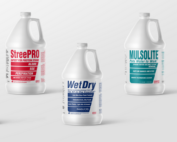
The Mystery of the Invisible Stain
It’s a scenario we’ve all seen or experienced: a customer marches up to the counter at a local dry cleaner, furiously proclaiming, “That stain was not there when I brought this garment in!” The employee behind the counter, unsure how to respond, nervously fumbles through an apology, ultimately offering to redo the cleaning.
Both parties are left dissatisfied—the customer, who intended to wear their favorite garment that evening, storms off without it. The dry cleaner is left scratching their head, certain they didn’t cause the damage.
This type of interaction plays out more often than you might think. It’s not a case of misplaced blame; it’s an issue both parties have overlooked—the infamous invisible stain.
What Are Invisible Stains?
The invisible stain typically emerges mysteriously after a garment has been cleaned or pressed and is a common headache in garment care. It's often caused by substances like sodas, food oils, or perspiration that seem to materialize out of nowhere. What actually happens is these stains are invisible initially, but exposure to air (oxidation) or heat during the cleaning process makes them suddenly appear.
A classic example is when a customer unknowingly spills a drop of soda on their clothing. The droplet dries and becomes invisible. Over time, oxidation turns the stain brown or yellow, which the heat of a dryer intensifies. The cleaner might miss the invisible stain during the cleaning process, leaving behind a conspicuous mark that’s difficult to remove and usually leads to customer frustration.
Types of Invisible Stains
- Soft Drink Stains: Sodas can dry without a visible mark, only to oxidize later into a noticeable stain due to the sugars and caramelization.
- Unsaturated Oil Stains: Food oils quickly oxidize into challenging stains. On polyester fabrics, they can be nearly impossible to remove. These often leave behind a crisscross pattern.
- Skin Oils and Perspiration: Human oils, especially on shirt collars, cuffs, and underarms, oxidize into yellowish stains over time.
How Can Dry Cleaners Address This?
To prevent invisible stains from becoming a significant issue, dry cleaners can prioritize customer and staff education:
- Train Your Staff: Educate your customer service representatives on the different types of invisible stains and how they form. This way, they can confidently explain the issue to customers.
- Instruct Your Customers: Encourage customers to promptly clean garments after spills and to point out potential stains during drop-off. Tell them not to attempt home remedies that could set the stain permanently and to avoid heat exposure (like putting the garment in a dryer).
- Handle Stains with Care: Always pre-treat visible stains and follow professional garment care procedures.
Taking these steps ensures that your customer service representatives can handle a dissatisfied customer with assurance and empathy, while also setting your business apart as a knowledgeable, customer-centric provider.
Conclusion
While invisible stains may seem like a dry cleaner’s nightmare, proper customer education and staff training can mitigate these situations. Be proactive by informing customers about the risks of untreated stains and offering professional advice on preventing them. A little education goes a long way in turning a potential complaint into an opportunity to build loyalty and trust with your customers.



